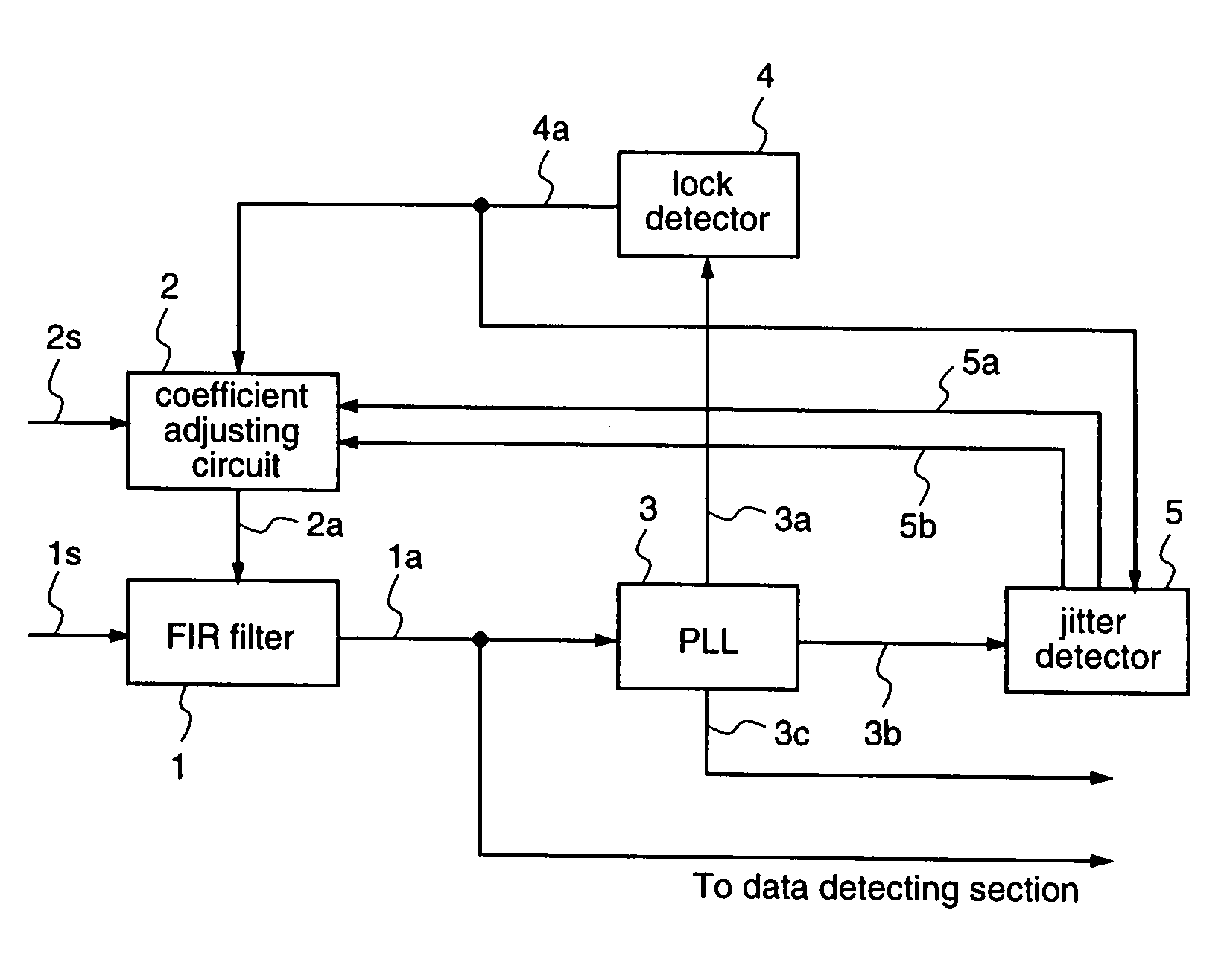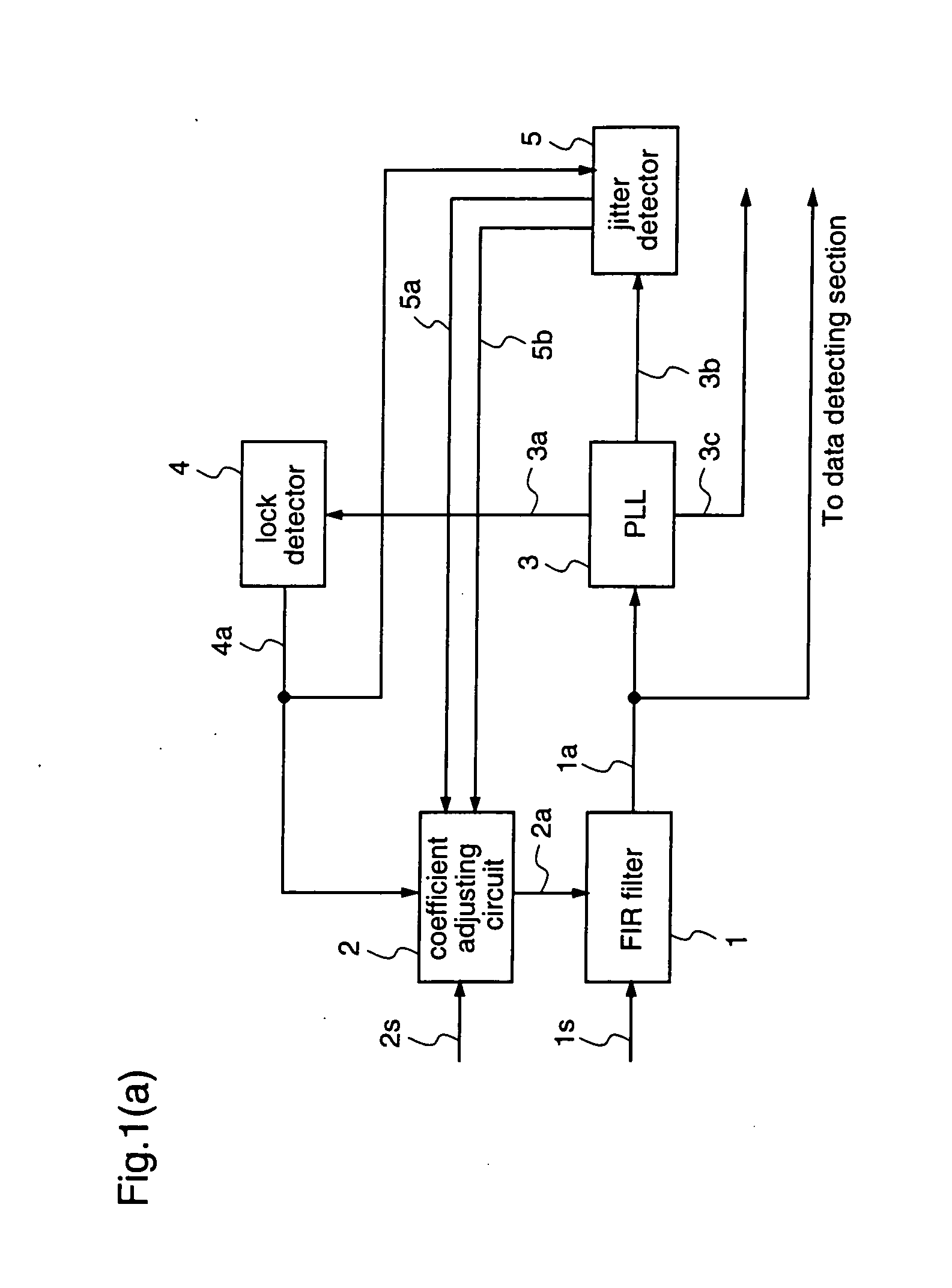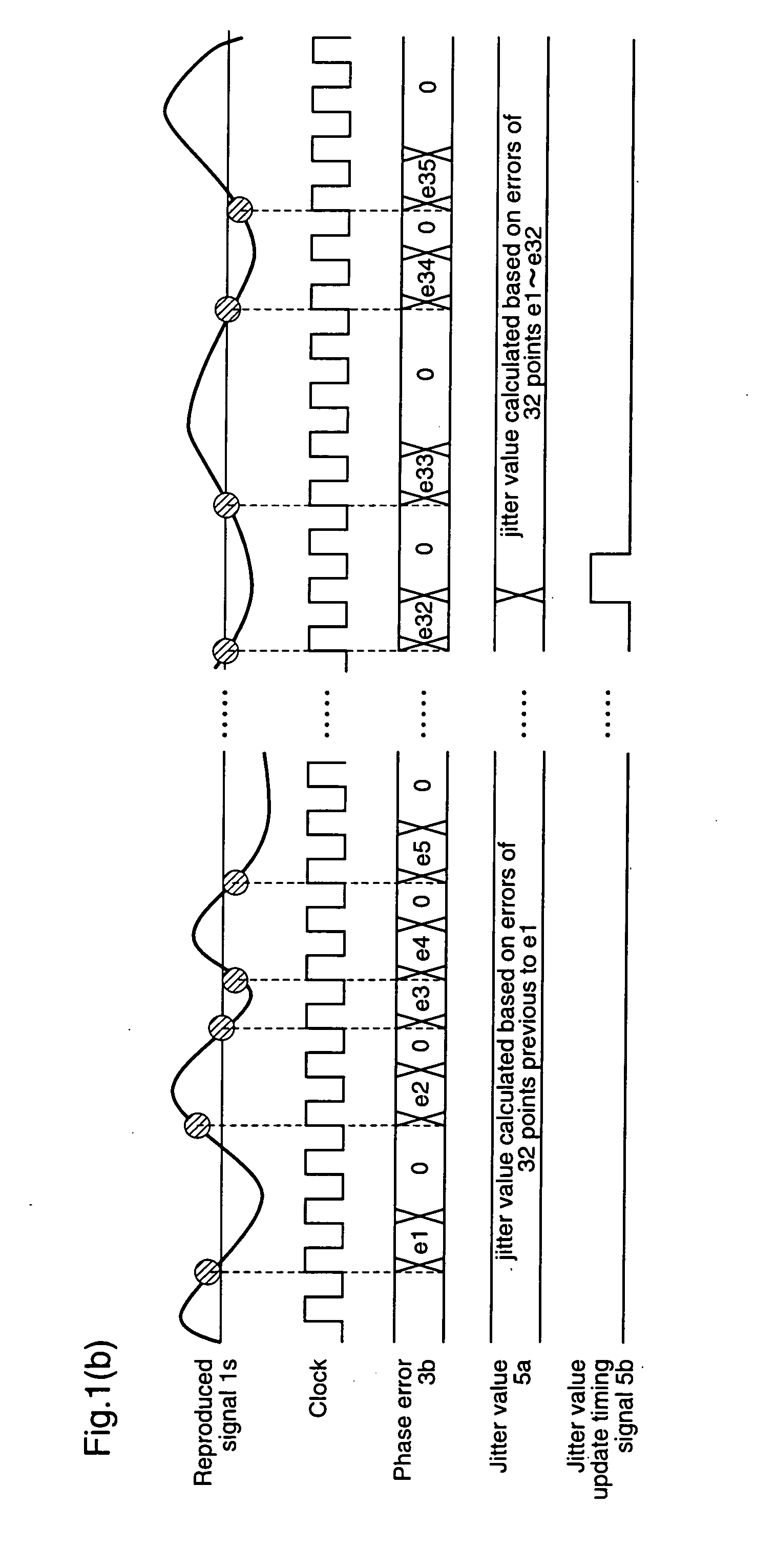Filter coefficient adjusting circuit
a filter coefficient and filter technology, applied in the field of filter coefficient adjusting circuits, can solve the problems of jitter characteristics of the pll circuit b>118/b> deterioration, complicated control, etc., and achieve the effects of optimizing the group delay of the reproduced signal, improving reproduction performance, and simplifying control techniqu
- Summary
- Abstract
- Description
- Claims
- Application Information
AI Technical Summary
Benefits of technology
Problems solved by technology
Method used
Image
Examples
embodiment 1
[0090] A filter coefficient adjusting circuit according to a first embodiment of the present invention will be hereinafter described, with reference to FIG. 1. FIG. 1(a) shows a structure of a filter coefficient adjusting circuit according to the first embodiment.
[0091] The filter coefficient adjusting circuit as shown in FIG. 1(a) comprises a FIR filter 1 which makes an inputted reproduced signal 1s subjected to a filtering processing employing an equalization coefficient, a PLL 3 which extracts clocks 3c which are synchronized with the reproduced signal on the basis of an output 1a of the FIR filter 1, a lock detector 4 which detects a lock state of the PLL 3, an equalization performance detecting means (jitter detector) 5 which detects an equalization performance of the FIR filter 1, and an equalization coefficient determining means (coefficient adjusting circuit) 2 which determines an equalization coefficient sequence 2a of the FIR filter 1 according to the output value 5a from...
embodiment 2
[0106] A filter coefficient adjusting circuit according to a second embodiment of the present invention will be described hereinafter, with reference to FIGS. 1-3 and FIGS. 6-7. Since FIGS. 1-3 are described in the first embodiment, the explanations thereof are omitted here.
[0107]FIG. 6(a) is a diagram illustrating a detailed structure of the asymmetry ratio determining circuit 201 in the coefficient adjusting circuit 2 of FIG. 3.
[0108] The asymmetry ratio determining circuit 201 as shown in FIG. 6(a) includes a jitter value capturing section 301 which captures a jitter value 5a which is outputted from the jitter detector 5, a controller section 302 which generates a control signal within the coefficient adjusting circuit 2, a minimum value detecting section 303 which detects the minimum value of the jitter values 301a which are captured into the jitter value capture section 301 and retains an asymmetry ratio at that time, an asymmetry ratio update section 304 which updates the as...
embodiment 3
[0126] A filter coefficient adjusting circuit according to a third embodiment of the present invention will be hereinafter described, with reference to FIGS. 1˜3 and 9. As FIGS. 1˜3 have been already described in the first embodiment, the explanations thereof are omitted here.
[0127]FIG. 9 is a diagram illustrating a structure of the multiplier section 202 in the coefficient adjusting circuit 2 in FIG. 3.
[0128] The multiplier section 202 as shown in FIG. 9 includes a selection signal generating section 503 which generates a select signal 503a and an enable signal 503b on the basis of the timing signal 201c which is outputted from the asymmetry ratio determining circuit 201, a multiplexer 501 which selects one among equalization coefficient initial values 11a˜14a on the basis of the select signal 503a, a multiplexer 502 which selects one among equalization coefficient initial values 15a˜19a on the basis of the select signal 503a, a multiplier 504 which multiplies the output from the...
PUM
 Login to View More
Login to View More Abstract
Description
Claims
Application Information
 Login to View More
Login to View More - R&D
- Intellectual Property
- Life Sciences
- Materials
- Tech Scout
- Unparalleled Data Quality
- Higher Quality Content
- 60% Fewer Hallucinations
Browse by: Latest US Patents, China's latest patents, Technical Efficacy Thesaurus, Application Domain, Technology Topic, Popular Technical Reports.
© 2025 PatSnap. All rights reserved.Legal|Privacy policy|Modern Slavery Act Transparency Statement|Sitemap|About US| Contact US: help@patsnap.com



